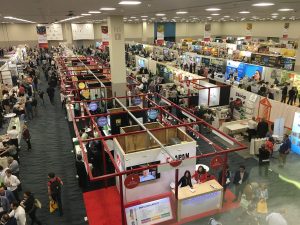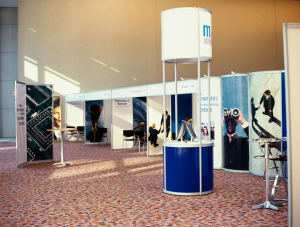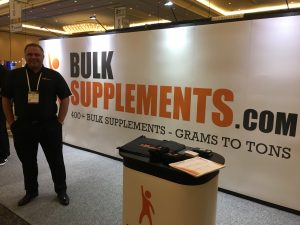Why Tradeshows Work – and Why They Don’t
When you think about it, there are several reasons why tradeshows work to reach new markets. And many reasons as to why they wouldn’t work for you.
Let’s start with why tradeshows work.
Tradeshows are organized for one very good reason: to bring buyers and sellers together under one roof for a short amount of time. It’s an extremely effective way to help both parties make connections. By setting up an exhibit at the right show – one that has hundreds or thousands of people or companies that are in the market for your product or service – you can save a ton of money when compared with trying to have face-to-face meetings with those same people at their company locations. Imagine meeting 100 people at a show over the course of three days. Then imagine the cost of traveling to 100 locations spread throughout the country (or state or world) and having the same meetings. Granted, a meeting in someone’s office is typically more relaxed than a meeting on the tradeshow floor. But other than the time and relaxation factors, it’s pretty much the same meeting! You’re determining if the prospect uses your product, is capable of making a purchase (they have the $$), and if they have the ability to make that decision for the company. It’s the same on the tradeshow floor.

Given all of that, tradeshows are the perfect structure for spreading the word about your product among a very large crowd that – again, if it’s the right show – are your target market. Naturally, you’re competing against companies that may be trying to sell virtually the same product or service to the same target market. That’s where the fun starts: how do you differentiate from them, how do you approach the prospect, how do you understand their needs, how do you make them look (and feel) good?
On the flip side, given the high cost and a multitude of variables that go into planning and executing a tradeshow appearance, a lot of exhibitors have come to the conclusion that tradeshow marketing doesn’t work. For them.
You could point to a number of reasons why it doesn’t work for them. They’re at the wrong show. With the wrong exhibit. In the wrong space. With a booth staff that isn’t properly trained. Going against competitors that are way ahead of them in experience, savvy, planning, and attitude. In fact, attitude, I would argue, is one of the keys to winning vs. losing at a tradeshow. But let’s take it a step further: let’s not even use the words “winning vs. losing” because that frames it as a competition. Yes, it is, in a sense. But if you consider all tradeshows as more than that – as a learning experience – take that experience and apply it to the next round. What worked? What didn’t? Why did something work, and why did something else not work? If that’s hard to figure out, it might mean you’re too close to it. Ask someone on the outside to take a look and give an objective perspective. Buy a book or two and learn how it’s done from people that have been there before.
Don’t give up. Keep plugging away. Keep trying. It can – and will – work for you, eventually.






